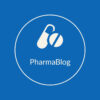EU GMP Guidelines for Self Inspection
EU Guidelines for Good Manufacturing Practice for Medicinal Products for Human and Veterinary Use
What is Self Inspection ?
Self-inspection refers to the process by which pharmaceutical manufacturers internally assess their own facilities, systems, and processes to ensure compliance with regulatory standards. It involves systematic reviews and evaluations of various aspects of manufacturing operations, including documentation, facilities, equipment, personnel, and quality control procedures. The primary goal of self-inspection is to identify any deficiencies or areas of non-compliance proactively, allowing the manufacturer to take corrective actions to maintain or improve compliance with EU GMP regulations. Self-inspections are a fundamental component of quality management systems in the pharmaceutical industry, helping to uphold product quality, safety, and efficacy.
Principle
Self inspections should be conducted in order to monitor the implementation and compliance with Good Manufacturing Practice principles and to propose necessary corrective measures.
Personnel matters, premises, equipment, documentation, production, quality control, distribution of the medicinal products, arrangements for dealing with complaints and recalls, and self inspection, should be examined at intervals following a pre-arranged programme in order to verify their conformity with the principles of Quality Assurance.
Self inspections should be conducted in an independent and detailed way by designated competent person(s) from the company. Independent audits by external experts may also be useful.
All self inspections should be recorded. Reports should contain all the observations made during the inspections and, where applicable, proposals for corrective measures. Statements on the actions subsequently taken should also be recorded.
Summary
The EU GMP guidelines for self-inspection provide comprehensive instructions for pharmaceutical manufacturers to internally assess compliance with EU GMP regulations. They emphasize the importance of thorough planning, documentation, and corrective actions. Key aspects include defining the scope and objectives, conducting inspections across critical areas, documenting findings, implementing corrective actions, and ensuring ongoing monitoring and training. Adhering to these guidelines enables manufacturers to maintain compliance, enhance product quality, and safeguard patient safety.
Reference : European Medicines Agency
Also read : SOP of Self Inspection
